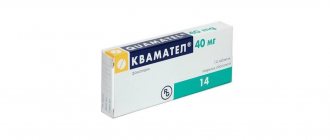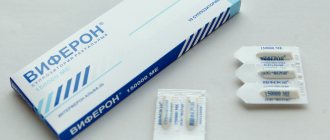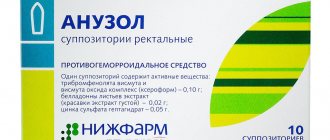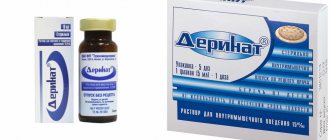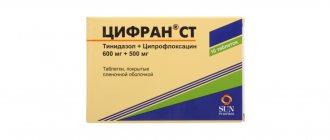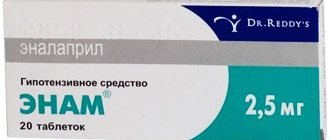pharmachologic effect
L Thyroxine is a substance of thyroid hormones. The active element of the drug has a similar therapeutic effect as the thyroid gland’s own compounds - triiodothyronine and thyroxine. Once in the body, sodium levothyroxine is converted into liothyronine, which has a direct effect on human growth and development, as well as the regulation of metabolism.
It is L Thyroxine that has the ability to influence oxidative metabolism in mitochondria and control the amount of cations inside and outside cells.
The pharmacological effect of the drug is explained by its dose. When taking the drug in a small dosage, anabolic processes occur in the body, and at a high dose, acceleration of oxidative reactions and metabolism is observed, cells and tissues become more demanding of oxygen, and improvement in the functioning of the heart, blood vessels and nervous system is also observed.
The result of therapy when taking the drug can be noticed after 5 days. Over the course of 3-6 months, the symptoms of diffuse goiter are completely suppressed.
The drug is rapidly absorbed after oral administration. Excreted through the kidneys and intestines.
L-Thyroxin
The use of tricyclic antidepressants with levothyroxine sodium may lead to increased effects of the antidepressants.
Levothyroxine sodium reduces the effect of cardiac glycosides.
When used simultaneously, cholestyramine and colestipol (ion exchange resins) reduce the plasma concentration of levothyroxine sodium by inhibiting its absorption in the intestine. In this regard, levothyroxine sodium should be used 4-5 hours before taking these drugs.
When used simultaneously with anabolic steroids, asparaginase, tamoxifen, pharmacokinetic interaction is possible at the level of binding to plasma proteins.
Protease inhibitors (eg, ritonavir, indinavir, lopinavir) may affect the effectiveness of levothyroxine sodium. Close monitoring of thyroid hormone concentrations is recommended. If necessary, the dose of levothyroxine sodium should be adjusted.
Phenytoin may affect the effectiveness of levothyroxine sodium due to the displacement of levothyroxine sodium from plasma proteins, which can lead to an increase in the concentration of free T4 and T3. On the other hand, phenytoin increases the rate of metabolism of levothyroxine sodium in the liver. Close monitoring of thyroid hormone concentrations is recommended.
Levothyroxine sodium may reduce the effectiveness of hypoglycemic drugs. Therefore, frequent monitoring of blood glucose concentrations is necessary from the start of thyroid hormone replacement therapy. If necessary, the dose of the hypoglycemic drug should be adjusted.
Levothyroxine sodium may enhance the effect of anticoagulants (coumarin derivatives) by displacing them from plasma proteins, which may increase the risk of bleeding, such as cerebral hemorrhage or gastrointestinal bleeding, especially in elderly patients. Therefore, regular monitoring of coagulation parameters is necessary both at the beginning and during combination therapy with these drugs. If necessary, the dose of the anticoagulant should be adjusted.
Salicylates, dicumarol, furosemide in high doses (250 mg), clofibrate and other drugs can displace levothyroxine sodium from binding to plasma proteins, which leads to an increase in the concentration of the free T4 fraction.
Sevelamer may reduce the absorption of levothyroxine sodium.
Tyrosine kinase inhibitors (eg, imatinib, sunitinib) may reduce the effectiveness of levothyroxine sodium. Therefore, at the beginning or at the end of a course of concomitant therapy with these drugs, it is recommended to monitor changes in thyroid function in patients. If necessary, the dose of levothyroxine sodium is adjusted.
Aluminum-containing drugs (antacids, sucralfate) are described in the literature as potentially reducing the effectiveness of levothyroxine sodium. Therefore, it is recommended to take levothyroxine sodium at least 2 hours before using these medications. This recommendation also applies to the use of medications containing iron and calcium salts.
Somatropin, when used simultaneously with levothyroxine sodium, can accelerate the closure of epiphyseal growth plates.
Propylthiouracil, glucocorticosteroids, beta-sympatholytics, iodine-containing contrast agents and amiodarone inhibit the peripheral conversion of T4 to T3.
Due to the high iodine content, the use of amiodarone may be accompanied by the development of both hyperthyroidism and hypothyroidism. Particular attention should be paid to nodular goiter with the possible development of unrecognized functional autonomy.
Sertraline, chloroquine/proguanil reduce the effectiveness of levothyroxine sodium and increase the concentration of TSH in the blood serum.
Drugs that induce hepatic enzymes (eg, barbiturates, carbamazepine) may enhance the hepatic clearance of levothyroxine sodium.
In women using estrogen-containing contraceptives or in postmenopausal women receiving hormone replacement therapy, the need for levothyroxine sodium may be increased.
Consumption of soy-containing products may reduce the intestinal absorption of levothyroxine sodium. Therefore, dosage adjustments may be necessary, especially when starting or stopping consumption of soy-containing products. With simultaneous use of orlistat and levothyroxine sodium, hypothyroidism may develop and/or a decrease in the control of hypothyroidism may occur. The reason for this may be decreased absorption of iodine salts and/or levothyroxine sodium. Patients taking levothyroxine sodium should consult their physician before starting orlistat as it may be necessary to take orlistat and levothyroxine sodium at different times of the day and the dose of levothyroxine sodium may need to be adjusted. Further monitoring of thyroid function is recommended.
Indications for Thyroxine
As a rule, Thyroxine is included in the basis of hormonal replacement treatment for decreased thyroid function. In addition, taking the medicine is relevant for the following conditions:
- Hypothyroidism of various origins.
- Excess body weight and pronounced signs of cretinism, provoking the appearance of thyroid hypothyroidism.
- Cerebral-pituitary pathological conditions.
- Prevention of the occurrence of nodular goiter due to surgery on the organ.
- Therapy of diffuse goiter.
- Treatment of malignant tumor of the thyroid gland.
- Graves pathology.
- Euthyroid proliferation of the gland.
Types of thyroid hormones
The thyroid gland produces two hormones: thyroxine (T4) and triiodothyronine (T3). They have common physiological properties, but differ in the number of iodine atoms in the molecule. Both Thyroxine and triiodothyronine are derivatives of tyrosine. The production of thyroid hormones is regulated by the hypothalamic-pituitary system.
When talking about the two main thyroid hormones, one cannot fail to mention TSH or thyroid-stimulating hormone of the anterior pituitary gland. It acts on specific receptors that are located on the epithelium of the thyroid gland and stimulates the synthesis of thyroxine.
Thus, TSH, T3 and T4 are closely related. The higher the concentration of the thyroid-stimulating hormone TSH, the lower the production of thyroid hormones of the thyroid gland - T4 and T3. At the early stage of endocrine diseases, laboratory diagnostic results may not show insufficient or excessive production of thyroid hormones, but the TSH level may indicate the presence of certain disorders. This allows for in-depth diagnosis to begin treatment as early as possible.
Contraindications
Absolute contraindications to the use of Thyroxine are:
- Acute myocardial infarction.
- Severe inflammatory lesions of the heart.
- Thyrotoxicosis, which has not previously been treated.
- Galactose deficiency.
- Impaired absorption of substances by the intestinal walls.
- Individual intolerance to the active substance.
- Kypocorticism.
It is necessary to take the drug with extreme caution in patients suffering from severe diseases of the heart and blood vessels, diabetes mellitus, and a severe form of hypothyroidism with a prolonged course of the process. In this case, patients need to change the therapeutic dose and duration of the therapeutic course.
Special instructions for the use of the drug L-thyroxine Berlin-Chemie
Before starting therapy with thyroid hormones, the patient should exclude the presence of coronary artery disease (angina), hypertension (arterial hypertension), pituitary insufficiency, adrenal insufficiency, thyroid autonomy and/or treat them accordingly. In case of coronary artery disease, heart failure or tachyarrhythmia, arrhythmias, even a mild form of hyperthyroidism is unacceptable. For patients at risk (patients with coronary artery disease, hypertension (arterial hypertension), tachyarrhythmia, chronic heart failure, insufficiency of the pituitary gland or adrenal cortex, autonomy of the thyroid gland), the drug is prescribed with extreme caution only after preliminary treatment of this pathology and under constant frequent monitoring of thyroid hormone levels glands. In case of secondary hypothyroidism, the presence of concomitant adrenal insufficiency should be excluded. If this condition is confirmed, it is necessary to first treat with corticosteroids (hydrocortisone). If thyroid autonomy is suspected, it is recommended to determine the TSH level and conduct suppression scintigraphy. When using levothyroxine for the treatment of hypothyroidism in women during menopause who have an increased risk of osteoporosis, in order to prevent the level of levothyroxine in the blood from exceeding the physiological norm, more frequent monitoring of thyroid function should be carried out. Use during pregnancy and lactation. Treatment with thyroid hormones must be carried out consistently, especially during pregnancy and breastfeeding. Despite the widespread use of the drug during pregnancy, the presence of danger to the fetus is still not known. The amount of thyroid hormone that passes into milk during breastfeeding, even with high-dose thyroid hormone therapy, is insufficient to cause hyperthyroidism or suppression of TSH secretion in infants. During pregnancy, patients with hypothyroidism may have an increased need for levothyroxine, which is caused by estrogens, so thyroid function should be monitored both during pregnancy and after, and, if necessary, dose adjustment of replacement therapy should be carried out. During pregnancy, the use of levothyroxine for concomitant treatment of hyperthyroidism with thyreostatic drugs is contraindicated, since this requires a higher dose of thyreostatic drugs. Thyrostatic drugs, unlike levothyroxine, penetrate the placental barrier in significant doses, which can cause the development of fetal hypothyroidism. In this regard, in the presence of hyperthyroidism during pregnancy, monotherapy with thyreostatic drugs in low doses is recommended. During pregnancy, thyroid tests using suppression should be avoided. Use in children. With congenital hypothyroidism, timely initiation of treatment is a decisive factor for the normal psychomotor development of the child. In the first 3–4 years of life, T4 levels should be brought to the upper limit of normal. In the first 6 months of life, a more reliable control is to measure the T4 level than the TSH level. In some cases, normalization of TSH levels, despite sufficient T4 levels, can take up to 2 years. More detailed information is provided in the APPLICATION section. The ability to influence reaction speed when driving vehicles or working with other mechanisms . Not known.
Side effects of L Thyroxine
If you take the drug under the vigilant supervision of a doctor and follow all his recommendations, taking the drug does not cause any side effects. Otherwise, symptoms of an allergic reaction are observed - skin rash, hyperemia, itching, urticaria.
Other symptoms occur with a high dose or incorrect treatment tactics. They appear rarely and represent the following conditions:
- Headache, tremors of extremities, anxiety, excitement, sleep disturbance.
- Cardiac disorder - arrhythmia, palpitations, angina pectoris, tachycardia.
- Dyspeptic manifestations.
- Pathological course of menstruation.
- Allergic symptoms.
- Excessive sweating, weight loss, fever, constant weakness, fever.
Signs of decreased and increased thyroid hormone levels
When the production of thyroid hormones is low, hypothyroidism develops. The disease can occur for a long time without significant symptoms.
The main manifestations of low levels of thyroid hormones:
- decreased performance;
- the appearance of daytime drowsiness and some inhibition of reactions;
- frequent illnesses due to weakened immune defenses;
- swelling in the legs and arms;
- disruption of the female menstrual cycle;
- instability to low temperatures and increased sensitivity to cold;
- deterioration of skin and hair condition.
When the concentration of thyroid hormones increases, the following signs appear:
- weight loss;
- cardiopalmus;
- unstable mental state;
- trembling of fingers;
- increased sweating;
- formation of a goiter in the neck area;
- physical weakness and high fatigue.
Instructions for use of L Thyroxine
According to the instructions, the drug should be taken on an empty stomach half an hour to an hour before meals, washed down with small amounts of still water. It is recommended not to chew the tablets. The therapeutic dose and course duration are determined by a specialist depending on the clinical indications.
As a replacement treatment, the drug is prescribed to patients under 55 years of age who do not have problems with the cardiovascular system at a dose of 1.6-1.8 mcg/kg. If there are any diseases and the patient is over 55 years old, the therapeutic dosage is halved.
For the treatment of congenital hypothyroidism, the dose of the drug is calculated taking into account the weight and age of the patient. The drug can be prescribed to children from the first days of life. As a rule, for such a condition, Thyroxine tablets are used for life.
For the treatment of thyrotoxicosis, the drug is simultaneously combined with antithyroid drugs after achieving the euthyroid process.
Side effects of the drug L-thyroxine Berlin-Chemie
When using the drug, tachycardia, increased heart rate, arrhythmia, angina pectoris, tremor, a feeling of internal restlessness, insomnia, hyperhidrosis, a feeling of heat, increased body temperature, weight loss, vomiting, diarrhea, headache, weakness and muscle spasms, menstrual irregularities may occur. . If these symptoms appear, it is recommended to reduce the daily dose or interrupt the drug for several days. As soon as the side effects disappear, you can return to treatment again, carefully increasing the dosage of the drug. Allergic reactions may occur in the form of urticaria, bronchospasm and laryngeal edema, and in some cases, anaphylactic shock.
Overdose of the drug L-thyroxine Berlin-Chemie
In case of overdose, an accelerated pulse, increased heartbeat, sweating, arrhythmia, insomnia, tremor, increased frequency of angina attacks, and worsening of diabetes mellitus are noted. It is recommended to stop taking the pills and conduct follow-up examinations. If severe tachycardia develops, it can be weakened with the help of β-adrenergic receptor blockers; thyreostatic agents are not used. When taking levothyroxine in a very high dose (suicide attempt), plasmaphoresis is used.
